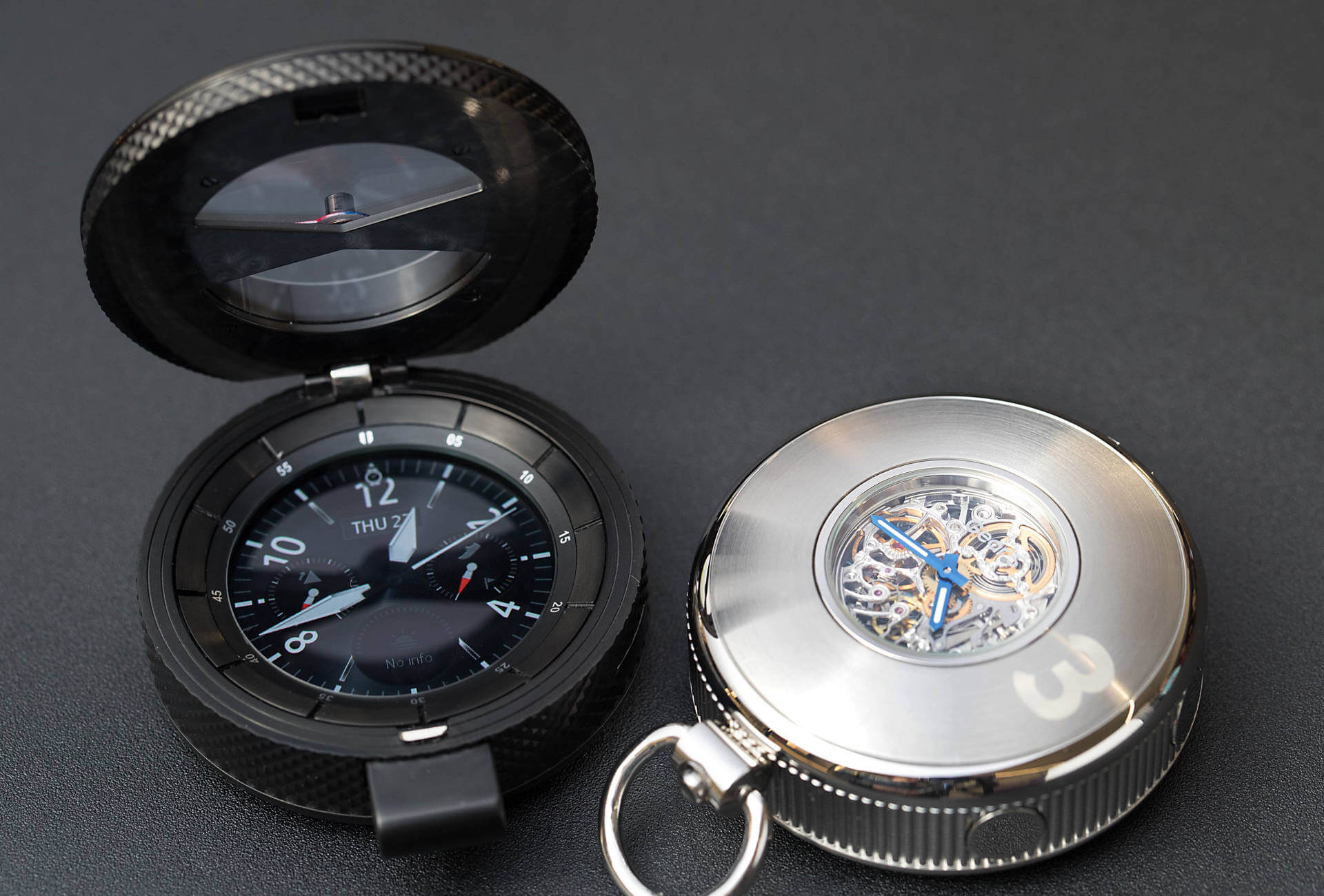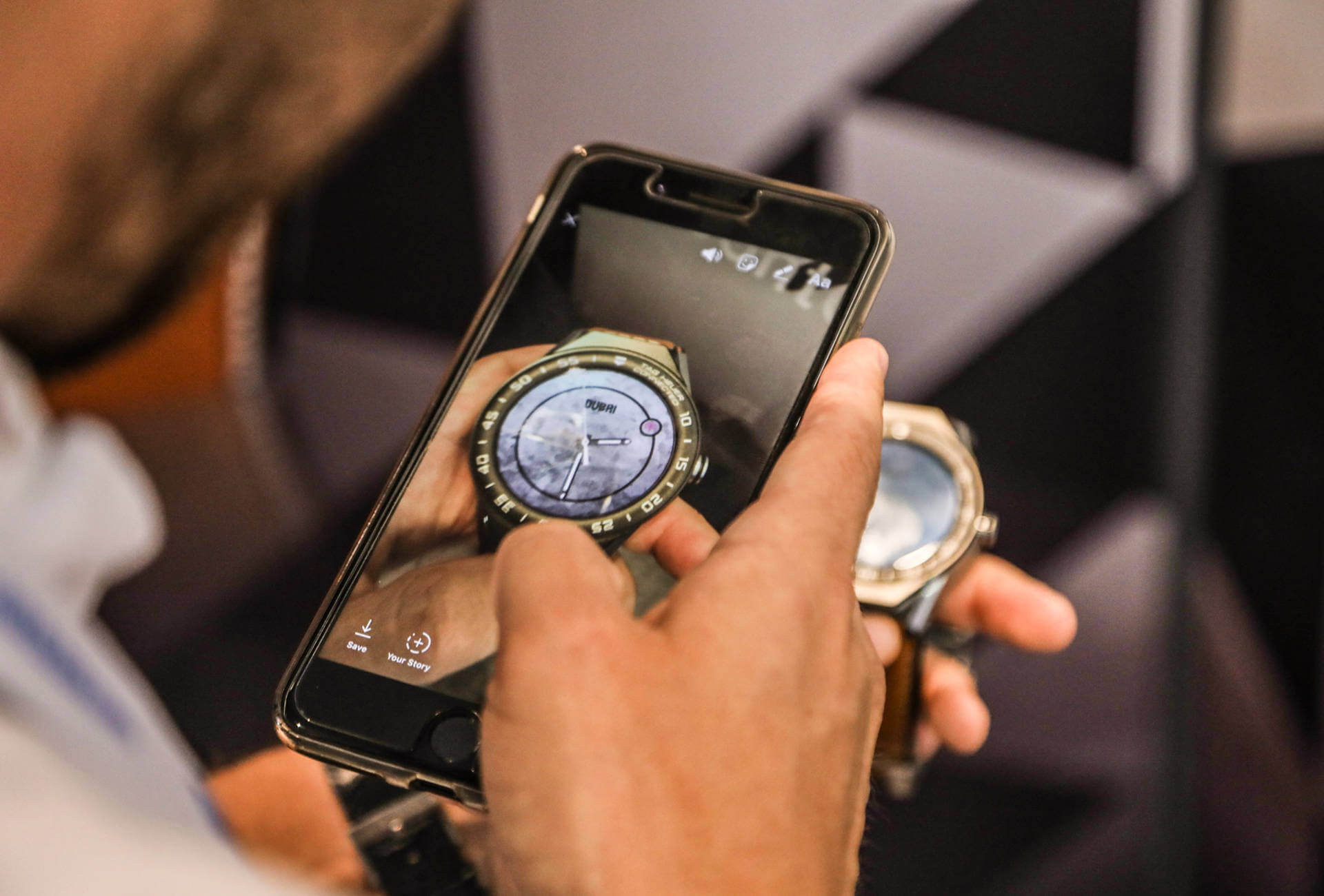Connected to Eternity: one of the most compelling questions in watchmaking today is summed up in these words on the back of a TAG Heuer case. The Carrera Calibre 5 is one of the watch heads in the connected package the firm is presenting this year. More specifically, it is the mechanical module for the Tag Heuer Connected Modular 45, a luxury smartwatch that offers a wide range of customisation options. Users can take their pick of strap, buckle, lugs and materials ranging from steel to diamonds. They can also (for a premium) choose to switch the connected module with OLED screen for the Calibre 5, even the Heuer 02T tourbillon calibre. Thus configured, the smartwatch becomes an entirely different beast: mechanical, not digital, connected only to eternity as the inscription on its case so emphatically reminds us.
This type of release raises some interesting questions as to the wristwatch’s present status, function and where it fits in relation to all-pervading digital technology. What is its own temporality? How do we define it, even? A timepiece that includes electronic circuits, a rechargeable battery, GPS and a touchscreen clearly doesn’t share the same positioning as a Haute Horlogerie watch. It’s another piece of wearable tech, more Silicon Valley than Vallée de Joux, however proud the modular TAG Heuer may be of its Swiss-Made label.
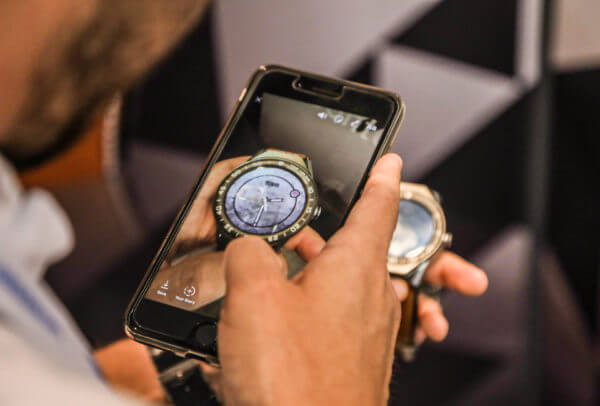
The weight of tradition
Brands are currently seeking ways to make their smartwatches a cut above; to add to their sparkle with noble materials. Or by playing on the sparkle of their own reputation in the luxury industry – think back to the Tambour Horizon that Louis Vuitton unveiled this summer. The collaboration between Hermès and the Apple Watch is another example of this desire to move upscale. Ultimately, though, nothing compares with the aura of a fine mechanical movement. Ask Geneva-based designer Yvan Arpa. He imagines Samsung’s connected watches, lending a Swiss pedigree to mass-produced Korean products. Which isn’t enough. For its debut appearance at Baselworld this year, Samsung came with futuristic prototypes of its Gear S3. One of which had swapped its silicon innards for a skeletonised Swiss movement.
Samsung’s other concept was a hybrid pocket watch: a large Gear S3 on one side, a small mechanical movement on the other to plant the seed of Swiss-Made, and hopefully outgrow its inexpensive digital size. After transhumanism, welcome to transhorologism, the new alliance of microchip and mechanics. In Basel, Samsung said it had no plans to make Yvan Arpa’s concept watches available to the public. But the idea was there.
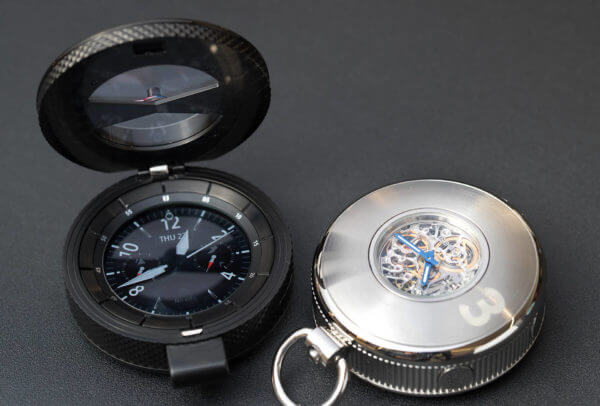
The symbolic weight of tradition is evident too in smartwatch analog displays. Many of these watches are nothing more than fitness trackers. They feature a real dial (with hands), often with the addition of a counter or a tiny digital screen. Their quartz mechanism has built-in sensors which, via a smartphone app, count number of steps, hours of sleep, heart rate, and so on. Smartwatches such as the TAG Heuer or the Apple Watch can display analog dials on their OLED screens whose hands, counters and scales are high-definition simulations. In the majority of cases, a smartwatch user can choose among multiple dials, and even personalise them at will.
The digital image implies an ontological rupture, a loss of being. It indicates a more distant relationship with the world. It is "less real".
Reality check
This isn’t just the new world paying its respects to the old. In terms of readability, we’re all familiar with the advantages of an analog display; its ability to show information in an immediately clear and easily memorised form. Digital displays of letters or numbers are less intuitive. They don’t stick in our minds so easily. Perhaps because we are analog beings by nature and our brain functions that way. To reproduce an analog dial by digital means raises a problem of indexicality, a term used in photography to describe the difference between film photography and digital photography. An image on film is indexical because there is a physical continuity between the object and its reproduction. Both are “real”, both “exist”. The digital image implies an ontological rupture, a loss of being. It indicates a more distant relationship with the world. It is “less real”.
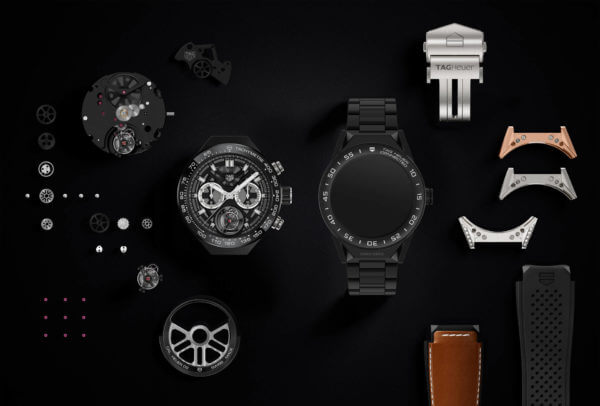
The same phenomenon applies to smartwatch digital screens. They display, in a profusion of pixels, analog dials but their images are intangible. Abstract. The material contiguity between a mechanical movement and rotating hands is absent. Something precious got lost along the way. The measurement of time is swamped by countless other functions. In fact the temporality of a smartwatch is different to that of a mechanical one. A smartwatch is a rechargeable object that cannot survive without its daily dose of electricity. Hence the advantage of having a mechanical module with automatic movement to hand, as with the TAG Heuer Modular 45. Also, a smartwatch runs off software that needs regular updates. Not forgetting planned obsolescence, with new versions launching each year, like a smartphone.
Time can be both short and long. In view of which, “Connected to Eternity” isn’t such a bad way of putting it. It invites us to consider how we define a wristwatch in the second decade of the twenty-first century. Autonomous or connected? Self-reliant or tied to the Internet of Things? Rooted in tradition or open to innovation? High-end or low-end? Swiss or American/Asian? Analog or digital? And most importantly, smart or not smart?








